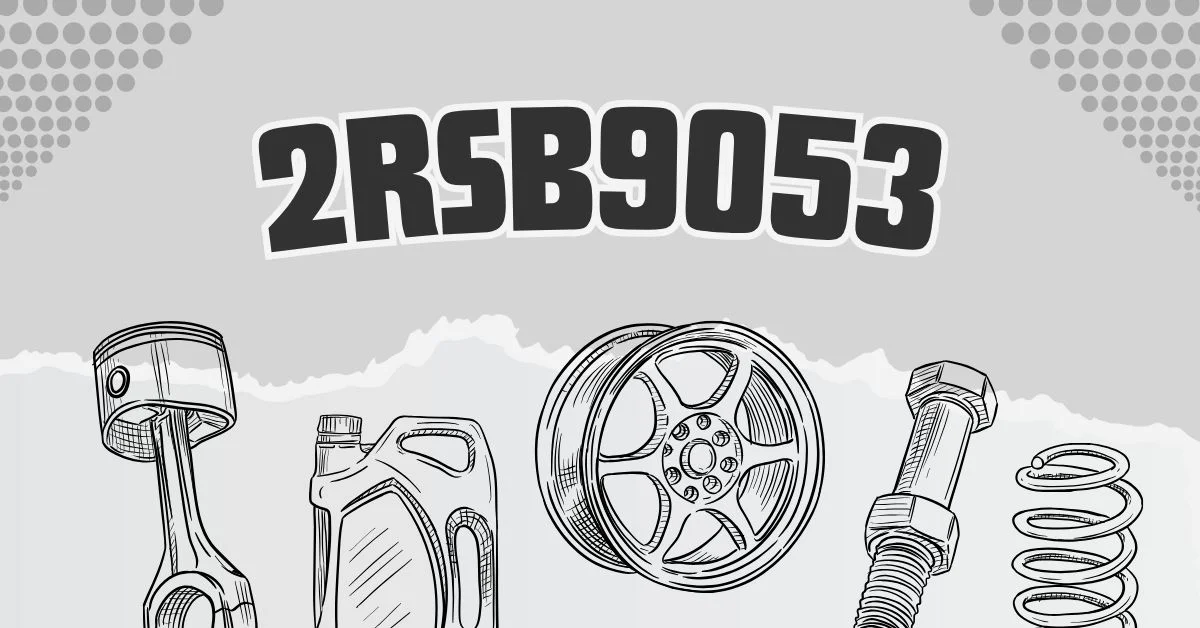In mechanical and industrial engineering, bearings are among the most essential yet often overlooked components. They facilitate smooth motion, reduce friction, and allow machinery to operate reliably under varied loads and speeds. One bearing designation that has been drawing attention in certain technical circles is 2RSB9053, which appears to be a specialized sealed bearing intended for demanding applications.
Meaning and Construction of 2RSB9053:
The name “2RSB9053” can be parsed in its parts. The prefix 2RS typically indicates that the bearing has rubber seals on both sides. These seals help prevent contaminants (such as dust, dirt, water) from entering the bearing, while also retaining lubricant inside. The “B9053” part likely refers to a particular series or model number denoting dimensions, load ratings, or design features.Thus, a 2RSB9053 would be a dual‑sealed bearing (seals each side) designed for robustness in more challenging environments. Such a bearing may incorporate high‑grade steel or alloy races, precision manufacturing tolerances, and careful sealing technology to balance protection and performance.Because of the dual seals, this bearing tends to require less maintenance than open or shielded bearings, especially in harsher or more contaminated settings. Keeping grease or lubricant inside and foreign particles outside helps extend its service life.
key Features and Technical Advantages
When comparing 2RSB9053 to more basic bearings, several features stand out:
- Sealing via Rubber Seals
The rubber seals offer superior resistance to ingress of dust, moisture, and other contaminants. This is especially valuable in environments with exposure to elements, such as outdoor machinery, agricultural equipment, or installations in dusty or wet areas. - Load Capability and Stability
Depending on the internal design (such as deep groove, angular contact, or double row), the bearing may support radial loads (perpendicular forces), axial loads (along the shaft), or combined loads. The sealing doesn’t detract significantly from load capacity if engineered well. - Reduced Maintenance
Because the seals maintain internal lubrication and block contaminants, these bearings typically need less frequent relubrication or cleaning, lowering maintenance costs and downtime. - Wide Application Range
Engineers may choose this bearing variant for motors, gearboxes, pumps, conveyors, or any rotating machinery where longevity and reliability are critical under tough conditions. - Precision and Tolerance Control
To function effectively, the internal dimensions, clearances, and bearing geometry must be manufactured within tight tolerances. Quality control is essential to ensure smooth rotation without excess vibration or heat generation.
Typical Applications
Given its protective sealing and durability, 2RSB9053 bearings are suited for use in:
- Electric motors, especially where environmental contaminants or moisture are present
- Gearboxes and transmissions in industrial machinery
- Pumps, compressors, and fans operating in dusty or humid conditions
- Agricultural or outdoor equipment, which often see mud, dust, and weather changes
- Conveyor systems, manufacturing lines, and any rotating assemblies exposed to contamination
In each case, the benefit is reliability over long periods, with reduced need for frequent servicing or replacement.
Selection Criteria and Considerations
When selecting a 2RSB9053 bearing or its equivalent, engineers should consider:
- Correct Size and Fit: Verify inner diameter, outer diameter, and width match the shaft and housing.
- Load Ratings: Ensure the bearing can support the expected radial and axial loads under operational conditions.
- Speed Ratings: The maximum rpm (rotations per minute) must not be exceeded; seals and lubrication must support those speeds.
- Lubrication Type: The choice of grease (or oil) must be compatible with the seals and material.
- Operating Environment: If very high temperatures, corrosive chemicals, or extreme vibration are involved, specialized versions or higher-grade materials may be required.
- Seal Material Quality: The durability and sealing quality of the rubber or elastomer seal depend on material quality and design.
Challenges and Trade‑Offs
Though 2RSB9053 offers many benefits, there are trade‑offs:
- Seals may introduce slightly more friction or drag versus unsealed bearings, especially at very high speeds.
- In very high temperature or chemically aggressive environments, standard rubber seals may degrade; stronger sealing materials or alternative sealing methods may be needed.
- If the seal fails or is worn, contamination can penetrate, so periodic inspection is still important.
- The initial cost of a well‑manufactured sealed bearing is higher than a basic unsealed one, although savings in maintenance and replacement can offset that over time.
Conclusion
The 2RSB9053 bearing represents a robust and reliable solution for machinery that operates in abrasive, moist, or contaminated conditions. Through dual sealing, high-precision construction, and thoughtful design, it provides enhanced durability and reduced maintenance needs. For engineers designing rotating systems that demand consistent performance in challenging settings, 2RSB9053 is a strong candidate—provided the specifications and environment are matched properly. As with all mechanical components, success depends on correct selection, fitting, lubrication, and periodic inspection to ensure long life and dependable operation.
